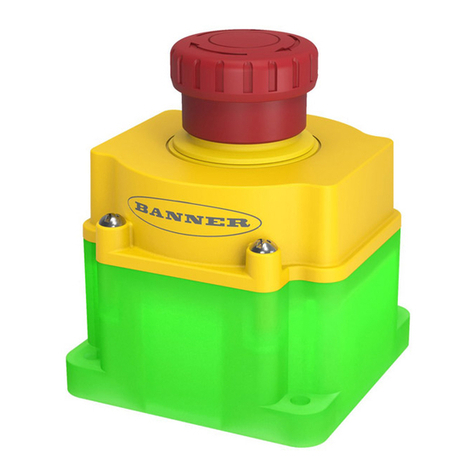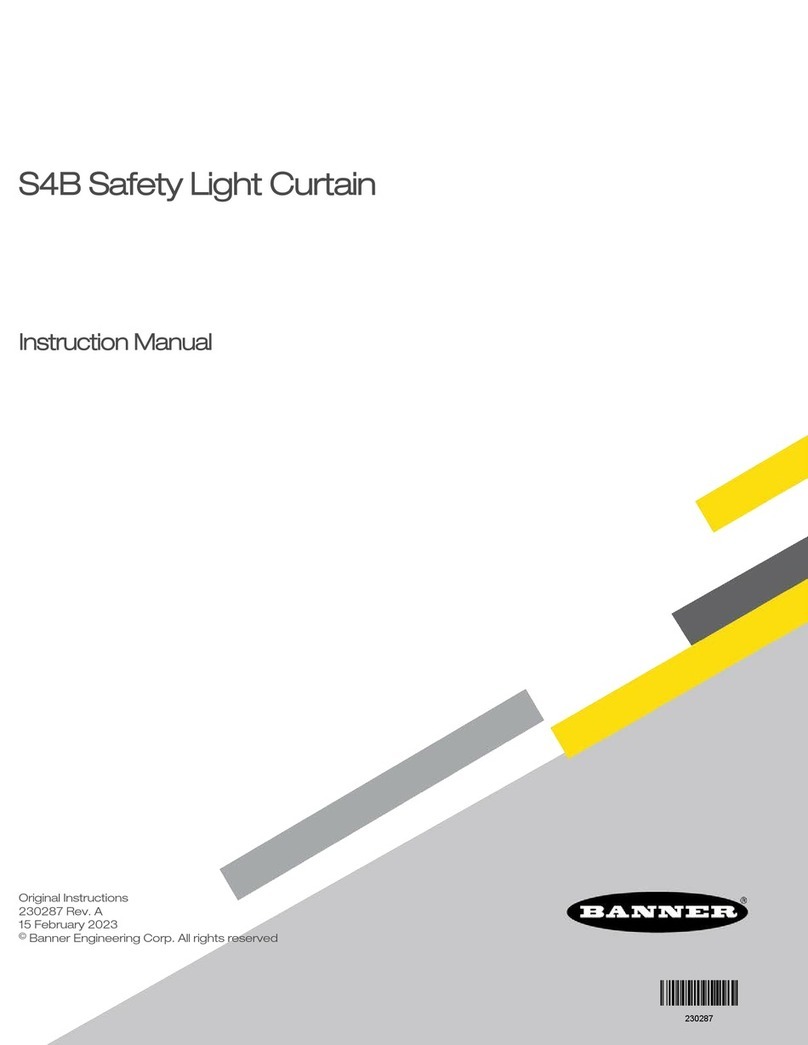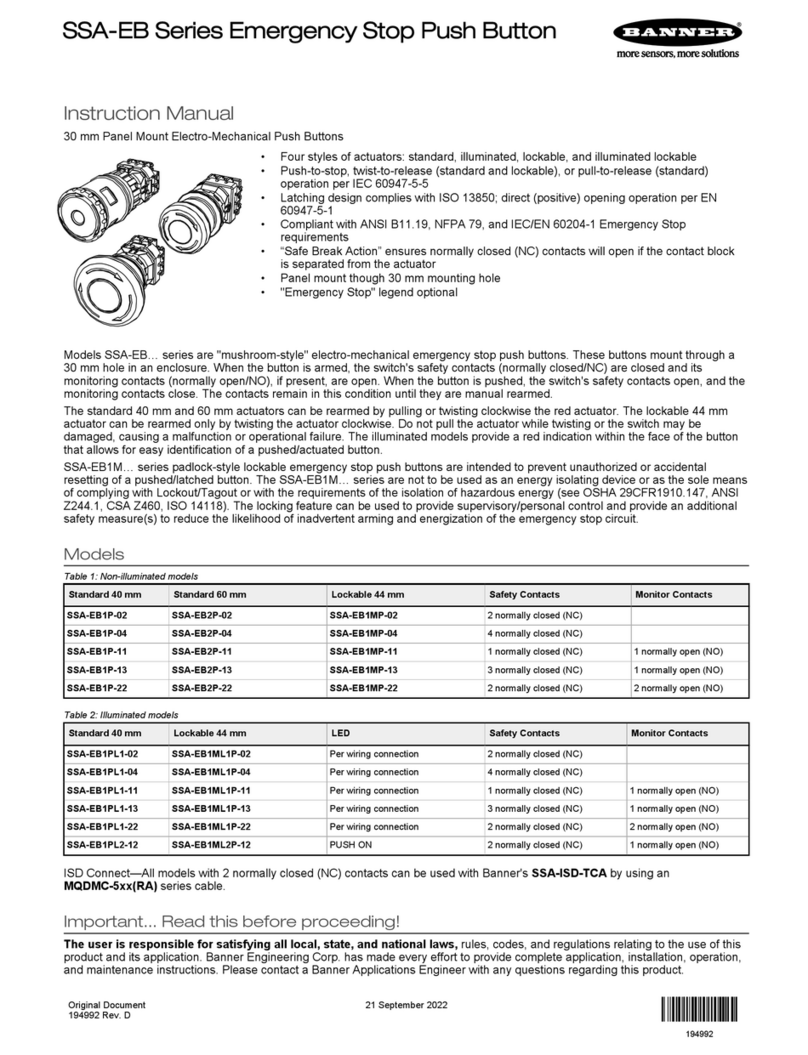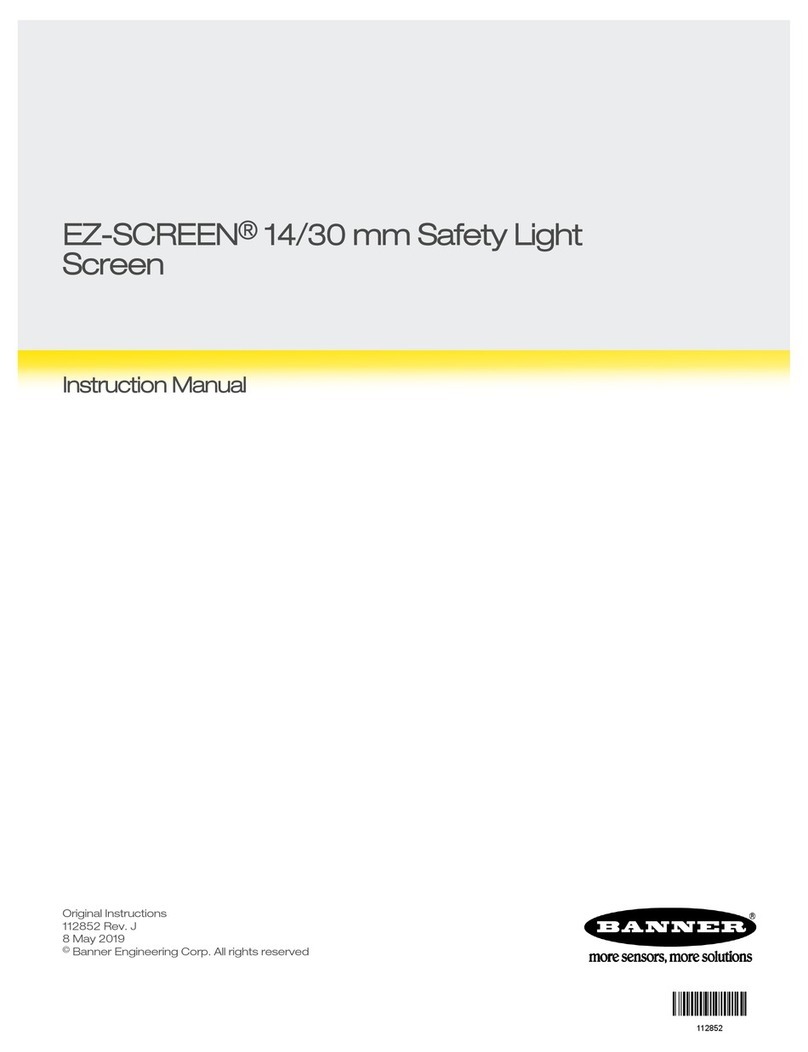
EZ-SCREEN
®
Type 2 Light Screen
System Semi-Annual Checkout Procedure
Original Document 1 September 2017 P/N 122451 Rev. A
To Be Performed Every Six Months Following System Installation:
Perform the procedure contained on this Semi-Annual Checkout card every six months following System installation, or whenever changes
are made to the System (either a new configuration of the EZ-SCREEN Type 2 or changes to the machine). Semi-Annual checkouts must be
performed by a Qualified Person (as defined by OSHA and in the Glossary in the Instruction Manual). A copy of the checkout results should
be kept on or near the machine: see OSHA 1910.217(e)(1).
The Qualified Person must:
1) Examine the guarded machine to verify that it is of a type
and design compatible with the EZ-SCREEN Type 2. See
Appropriate Applications and Limitations in the Instruction
Manual for a list of misapplications.
2) Verify that the minimum separation distance from the
closest hazard point of the guarded machine to the defined
area is not less than the calculated distance, determined in
Calculating the Safety Distance (Minimum Distance) in the
Instruction Manual and indicated here: _____________.
3) Verify that:
• Access to any hazardous parts of the guarded machine
is not possible from any direction not protected by
the EZ-SCREEN Type 2, hard guarding, or supplemental
safeguarding, and
• It is not possible for a person to stand between the light
screen and the dangerous parts of the machine, or
• Supplemental safeguarding and hard guarding, as
described by the appropriate safety standards, are in place
and functioning properly in any space (between the light
screen and any hazard) which is large enough to allow a
person to stand undetected by the EZ-SCREEN Type 2.
4) Verify that:
•The reset switch is mounted outside the guarded area, out
of reach of anyone inside the guarded area and
•The key or other means of preventing inadvertent use is
in place.
5) Examine the electrical wiring connections between the
EZ-SCREEN Type 2 OSSD outputs and the guarded machine’s
control elements to verify that the wiring meets the
requirements stated in Electrical Connections to the Guarded
Machine in the Instruction Manual.
6) Inspect the area near the defined area (including work
pieces and the guarded machine) for reflective surfaces.
(Reflective surfaces may cause light screen beams to reflect
around a person in the defined area, preventing the person
from being detected and not stopping the machine motion.)
Remove the reflective surfaces as possible by relocating
them, painting, masking or roughening them. Remaining
problem reflections will become apparent during step 10.
7) Apply power to the EZ-SCREEN Type 2. Ensure that power to
the guarded machine is OFF. Remove all obstructions from
the defined area.
Latch Output models: The receiver Alignment indicators will
be flashing Yellow. Perform a manual reset (open the reset
switch for 1/4 second, then close it).
Verify that the Status Clear indicator is ON Green.
8) Observe the status indicators on the receiver to determine
System status:
• Blocked: Both Alignment indicators OFF (sync beam
blocked), or
Top Alignment indicator ON Yellow, or
Both Alignment indicators ON Yellow, and
Status Blocked indicator ON Red, and
Status Clear indicator OFF
• Clear: Alignment indicators ON Yellow
Status Blocked indicator OFF
Status Clear indicator ON Green
• Latch: Alignment indicators flashing Yellow
(defined Status Blocked indicator ON Red
area clear) Status Clear indicator OFF
If indicator status is different from options described above,
refer to Recovery Procedures in the Instruction Manual for
possible fault conditions and recovery procedures.
9) If in a Clear condition, go to step 10. If in a Lockout
condition, refer to Troubleshooting and Maintenance in the
Instruction Manual. A Blocked condition indicates that one
or more of the beams is misaligned or interrupted. To correct
this situation:
a) Check carefully for any obstruction in the beam path.
b) Check for contamination. Clean the emitter and receiver
windows as required (see Servicing and Maintenance in
the Instruction Manual).
c) If the defined area is completely clear of obstructions,
realign the emitter and receiver, as described in Initial
Power-Up and Optical Alignment in the Instruction
Manual.
If the EZ-SCREEN Type 2 is in a Latch condition, perform a
manual reset.



























